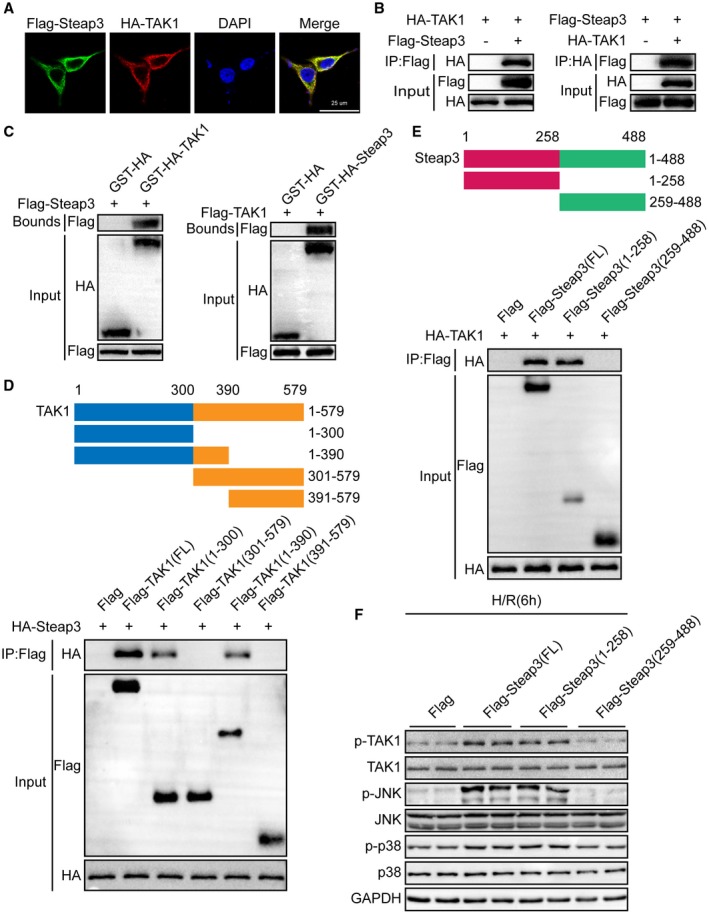Figure 7.

Steap3 directly interacts with TAK1 and promotes TAK1 signaling activation. (A) Representative confocal images showed 293T cells cotransfected with Flag‐tagged Steap3 and HA‐tagged TAK1. Proteins were visualized using anti‐Flag (green) and anti‐HA (red) antibodies, followed by fluorophore‐conjugated secondary antibodies after 24 hours of transfection. Nuclei were stained using 4′,6‐diamidino‐2‐phenylindole (blue). n = 3 independent experiments per group with 6 images per group. Scale bar, 25 μm. (B) Flag‐tagged Steap3 and HA‐tagged TAK1 plasmids were cotransfected into 293T cells. Anti‐Flag antibody (left panel) or anti‐HA antibody (right panel) were used for immunoprecipitation. Representative of three independent experiments. (C) Flag‐tagged Steap3 and GST‐HA‐tagged TAK1 plasmids or Flag‐tagged TAK1 and GST‐HA‐Steap3 TAK1 were cotransfected into 293T cells. Representative of three independent experiments. (D) Full‐length HA‐Steap3 and various truncated forms of Flag‐TAK1 were cotransfected into 293T cells. An anti‐Flag antibody was used for immunoprecipitation. Representative of three independent experiments. (E) Full‐length HA‐TAK1 and various truncated forms of Flag‐Steap3 were cotransfected into 293T cells. An anti‐Flag antibody was used for immunoprecipitation. Representative of three independent experiments. (F) Western blot analysis of total and phosphorylated TAK1, JNK, and p38 in hepatocytes transfected with various truncated forms of Flag‐Steap3 subjected to H/R challenge. GAPDH served as the loading control. Representative of three independent experiments. Abbreviations: DAPI, 4′,6‐diamidino‐2‐phenylindole; IP, immunoprecipitation.
